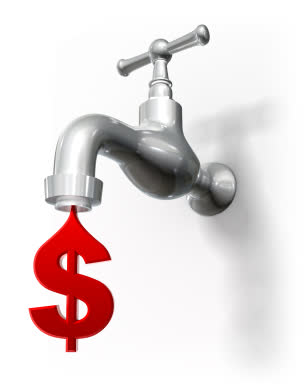Dividend Value Builder Newsletter
– Discover, Compare, and Evaluate Dividend Stocks Without Emotional Bias –
(Intrinsic Value Analysis For Over 300 Stocks)
Explain Free Cash Flow and Free Cash Flow Yield

Free Cash Flow (FCF) and Free Cash Flow Yield (FCFY) are important metrics for stakeholders (common stock owners, debt holders, preferred stock holders, convertible stock holders, etc.) because it provides a more accurate picture of an entity’s financial health than net income. This is because net income includes non-cash accounting adjustments and may not accurately reflect crucial aspects of a company’s health.
Free Cash Flow metrics evaluate whether a company has sufficient cash resources to meet the goals of the entity and its’ stakeholders (debt reduction, dividends, stock buybacks, acquisitions, etc.).
Free Cash Flow Calculation
Free Cash Flow (FCF) = Operating Cash Flow (OCF) – Capital Expenditures
Operating cash flow is important because it reports the amount of cash from operations generated by a company. This metric can easily be found in the company cash flow statement.
Free cash flow is operating cash flow minus capital expenditures. It is the cash available to distribute to stakeholders (debt and equity holders) after the bills are paid, and after provisions have been made for the future of the enterprise (capital expenditures). This metric is important because it represents the money available to enhance shareholders.
This valuable metric can be used as a ratio to provide one of the most powerfully useful ratios in stock analysis:
Free Cash Flow Yield (FCFY)
We can take this relevant information and produce a ratio that is one of the most useful metrics in stock analysis: Free Cash Flow Yield.
Free Cash Flow Yield = Free Cash Flow / Market Capitalization
This ratio expresses the percentage of money left over for shareholders compared to the price of the stock. The ratio is exceedingly pertinant to an investor because it relates to the value you are receiving for your investment dollar.
A company could have high cash flow compared to its assets but the stock price be so expensive that the value for the investor is low. It’s also possible that cash flow compared to company assets could be low but the stock price be such a bargain that the value for the investor is high.
By comparing free cash flow to market capitalization (shares outstanding x price of stock) you produce a percentage of return on the value of stock that can be used to enhance shareholders. This could include dividends, stock buybacks, reduction in debt, or additional investments (i.e. acquisitions).
Now one step further:
Interested in Dividends?
Net Free Cash Flow Yield
Net Free Cash Flow makes further allowances for the current portion (1 year) of long term debt, and dividends the company currently intends to pay.
Net Free Cash Flow (NFCF) = Free Cash Flow (FCF) – current portion of long term debt – current portion of future dividends (1 year).
I don’t find Net Free Cash Flow used too much, possibly because its similar to Free Cash Flow.
Importance of Free Cash Flow
Free Cash Flow is a part of analyzing the strength and health of a company. A company with a negative free cash flow may not have the liquidity to stay in business without obtaining additional cash through borrowing or raising equity capital. Declining cash flows are a warning sign that the company future earnings may not be able to grow.
A company with positive net free cash flow is generating the cash needed to pay operating bills, meet working capital requirements, pay taxes, meet current interest and debt payments, invest in capital expenditures, and pay dividends. Rising cash flows can indicate a company is healthy and many times precedes increasing earnings and enhanced shareholder value.
Free Cash Flow Yield determines if the stock price provides good value for the amount of free cash flow being generated. In general, especially when researching dividend stocks, yields above 4% would be acceptable for further research. Yields above 7% would be considered of high rank.
Related Reading:
Intrinsic Value Stock Analysis – My Formula
Minimize Large Portfolio Drawdowns
Invest With Confidence in Less Time - Manage Your Portfolio Without Behavioral Errors
